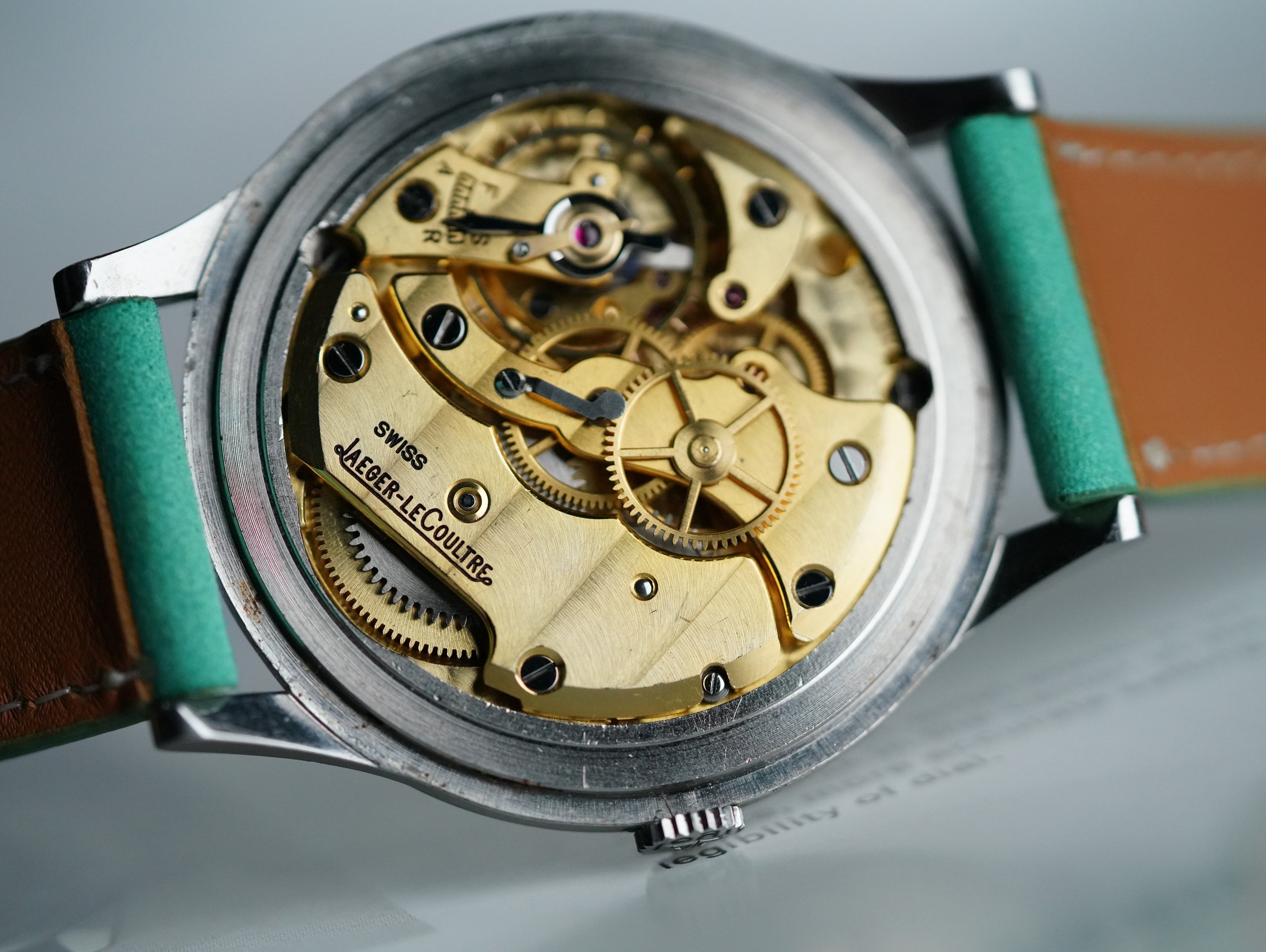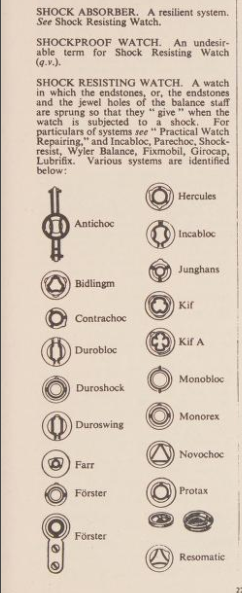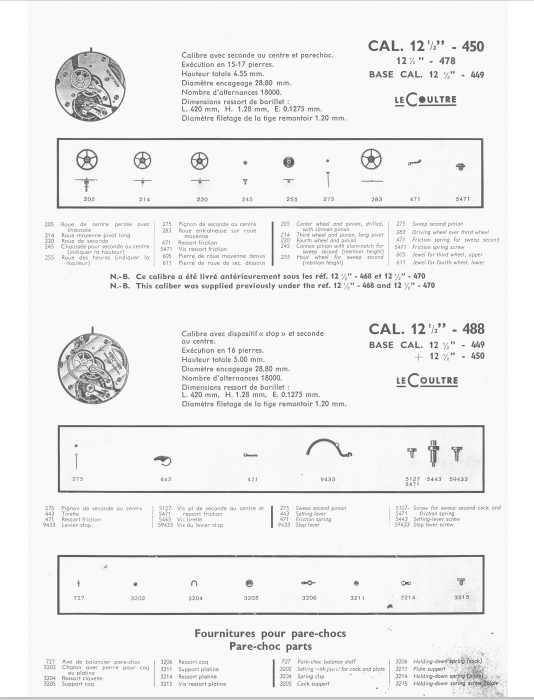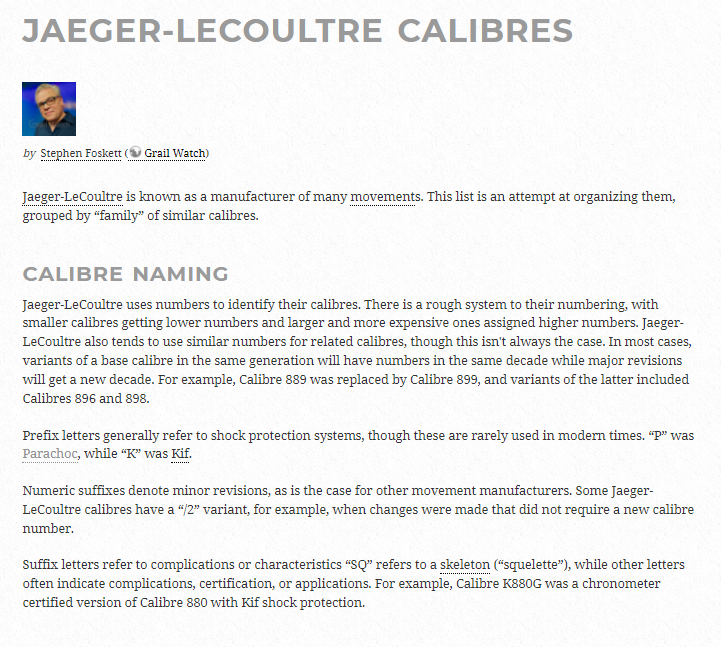
‘Parechoc and the P450/4C’
What is Parechoc, and what is it doing in my JLC? (Part 1)
After realizing there was a void in information online regarding the calibre P450/4C, I took some time to photograph my Jaeger-LeCoultre reference 2983’’s movement for those who may be looking for the same information. While passing by the manufacturer en route to Le Brassus, I became determined to figure out the details of the calibre. I stopped into the JLC Geneva boutique upon return to skim through their library.
Upon noticing Franco Cologni’s ‘Jaeger‑LeCoultre, The Story of the Grande Maison’, I felt inclined to look for any insights. I uncovered a small detail within the back of the book indicating the cal. 450 dates back to 1940, and features the dimensions of 28.25mm in height, with a width of 4.5mm. Unfortunately, there wasn’t further information on references in which the 12.5 ligne movement was used. Below is a technical sheet I uncovered later that evening that evening.
Image credit: https://watchguy.co.uk/
As mentioned in a previous article, the decoration of the calibre P450/4C is quite discernible compared to the purpose-based rhodium-plated military timepieces cited within Basha’s ‘Jaeger-LeCoultre: A Guide for the Collector’. After a small amount of time comparing other calibre 450s online, my impression was that the calibre P450/4C differs in the finishing, and potentially is a higher grade movement in which the section surrounding the balance wheel was improved upon.
With a bit more searching, I was able to confirm references 2983, 2975 and 2953 feature the calibre P450/4C which can be seen within a catalogue excerpt below.
Jaeger-LeCoultre catalog with reference 2983 and reference 2953 feature the calibre P450/4C. Image credit: carousell.sg
Parechoc S.A. Le Sentier
The ambiguous details of the calibre P450/4C began to make sense when I had discovered watch researcher Stephen Foskett’s entry in watch-wiki.net in which he elaborates on the calibre naming system.
The P450 indicates the calibre incorporated the shock protection via Parechoc. As Foskett writes “Prefix letters generally refer to shock protection systems, though these are rarely used in modern times. “P” was Parechoc, while “K” was Kif.”
While numeric suffix /4C denotes “minor revisions, as is the case for other movement manufacturers. Some Jaeger-LeCoultre calibres have a “/2” variant, for example, when changes were made that did not require a new calibre number.”
Foskett expands on his personal website (grail-watch.com) within the article ‘Portescap KIF Vintage Ads’:
“Pare-choc” literally means “shock absorber” in French. But it’s also the name of a company, Parechoc SA, of Le Sentier. Although Incabloc, produced by Portescap SA of La Chaux-de-Fonds, was the industry leader in shock absorbers, Parechoc’s KIF is almost as famous. It’s Coke vs. Pepsi in the Valle de Joux!”
Portescap KIF Vintage Ads excerpt from Grail-Watch.com
Within the American Horologist and Jeweler 1960-12: Vol 27 Issue 12, Parechoc S.A. acknowledges the growing competition and decreasing quality control within the watchmaking industry over the recent years. Interestingly, the title highlights this from the European perspective to the American watchmaker audience. The company would emphasize three advantages from standardization amongst the European manufacturers which serve to benefit watchmakers in the west.
1) The ebauche factory need prepare only one type of combined in-setting, the simplest and most practical which consists of two ground holes into which the in-settings are pressed.
2) The watchmaker can adjust the height play merely by regulating the staking tool so that it presses the in-setting more or less deeply into the plate.
3) In addition to being simple, practical and economical, such a system is especially suitable for mass production..

American Horologist and Jeweler 1960-12: Vol 27 Issue 12

July 6, 1933: Fritz Marti patents the Incabloc shock protection within Universal Escapements, Ltd (later Portescap SA).
Rewinding 16 years back from the American Horologist and Jeweler issue (and 6 years before production of the beginning of production of calibre 450), the history of Incabloc developing momentum. The official website in fact goes into great detail on their history.
“Exploding Sales: Although first regarded as an accessory subject to the whims of fashion, the shock absorber went on to become the mandatory component of almost every lever watch. Year-on-year sales took off impressively. In 1935, after two and a half years in production, Portescap announced the delivery of 300,000 Incablocs. Things got hectic after the Second World War: five million sold in 1950; almost 10 million in 1955 and 15 million in 1957. The 20-million mark was reached in 1962, rising to 36 million in the early seventies (160,000 units a day!). Up to the mid-seventies an estimated total of 500 million Incablocs had been sold.” (1)
It was quite late that in 1948 Incabloc began to advertise globally, and the company’s employment tripled over the course of 1950-1957. They became “the watch industry’s biggest non-affiliated and non-watchmaking company” by the late 50s and the largest employer in La Chaux-de-Fonds by the early 70s.

Various shock resisting systems. Image credit: Watch & clock encyclopedia by Donald De Carle (1984)

Parechoc S.A. LeSentier advertisement. Image Credit: Europa Star: (TRADE BULLETIN | 1950 | ISSUE #197 | 1/13 | PAGE 8)
There have been some claims indicating Incabloc made stipulations that their branding was required on dials, Although it may be true, I have yet to encounter any specific sources confirming the point. With this in mind, this could have hypothetically expedited other parties throughout the early years to create a higher quality shock-resistant technology within the watch industry. It was certainly not a matter producing at the same scale, but rather outperforming Incabloc. As indicated by Parechoc's earlier article, integrating consistency within Ebauches would make for a less bumpy ride for both watchmakers and manufacturers.
Combing through the primary source material, I could find most of the features in trade publications stem back to the 1950s, along with their patents beginning in 1953. The earliest mention I could find was within Europa Star’s archives from 1950. Weighing the JLC citation my movement being from 1945, I am a bit more adamant to believe the movement had been shelved for 5-10 years. Yet demanding questions still remain. What is Parechoc’s history? How did they perform against other shock protection systems? Can I operate a jackhammer with my vintage watch?
Stay tuned for part 2.
To read about other Jaeger-LeCoultre timepieces, see below:
‘A Vintage Jaeger-LeCoultre Memovox Catalog Circa 1958’
‘Collector’s Guide: Jaeger-LeCoultre Memovox Reference E 875’
‘LeCoultre Chronograph Reference 224115’
‘Vintage LeCoultre Memovox Reference 2404 (Circa 1960s)’
‘Vintage LeCoultre 8 Day Alarm Travel Clock Reference 53’
‘Vintage Jaeger-LeCoultre Memovox Reference 3157 aka the “Travalarm”’
Jaeger-LeCoultre Reference 11012 Retailed by Hermès
Jaeger-LeCoultre Memovox Reference E 851
LeCoultre Memodate: A Vintage Gold-Filled Gift For A 13 Year Old Collector










